
I asked for this cookbook a couple Christmases back because I had fond memories of my Mom cooking from her drip-stained copy of it when I was in junior high. It’s a cookbook we got from the Mormon church, and the backstory on it deserves its own blog entry.
For whatever reason, I never actually cracked it open until this year’s Cookbook of the Month project. As I was flipping through it, I realized two things: one, this cookbook doesn’t really know who its audience is; and two, my Mom didn’t actually cook many recipes from this cookbook. I only recognized a couple things, and the rest were either dead-simple staples or slightly unusual ways to recombine the food from your pantry.
So, I texted my Mom and asked her what she actually made out of this cookbook.
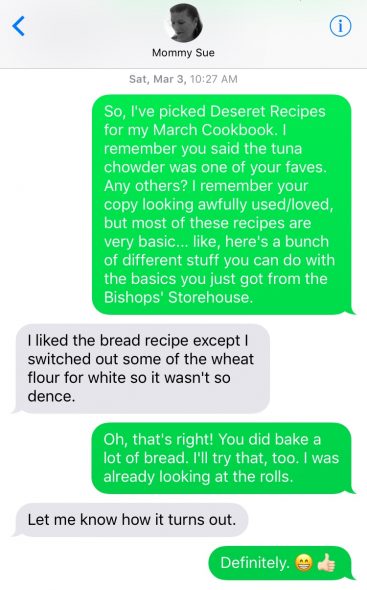
First, let me explain what I mean when I say that I don’t know who this cookbook’s audience is supposed to be.
The introduction begins, “This book was compiled to give you easy, economical recipes that will add variety and interest to your diet.” The cookbook goes on to include daily nutrition requirements (1981-style), common measures of food, and menu ideas. Then, at the beginnings of some of the sections, there are additional guides, like meat cookery terms, time and temperature charts, etc.
However, the actual instructions for each recipe are extremely basic, and assume that the reader knows things like when bread dough has been kneaded for long enough. (I suspect that my Mom’s extremely dense wheat bread had more to do with the dough being underdeveloped than it did with the variety of flour she used.)
Many of the recipes are, indeed, examples of how the cook of the house could recombine her food storage and other inexpensive staples into something different for her family to enjoy. Monday Macaroni was a prime example of this.
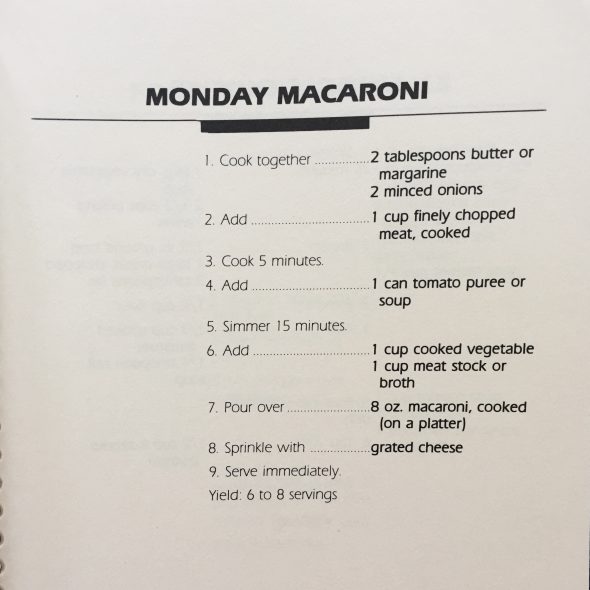
As usual, I made some modifications. I used reserved bacon drippings instead of butter (and much less at that) and added Worchestershire to spice it up a bit.
Surprisingly, it was actually pretty good, although it wasn’t much to look at (so I didn’t bother photographing it — or much of anything from this cookbook, actually).
Next, I decided to try my hand at bread-baking. For the first time ever.
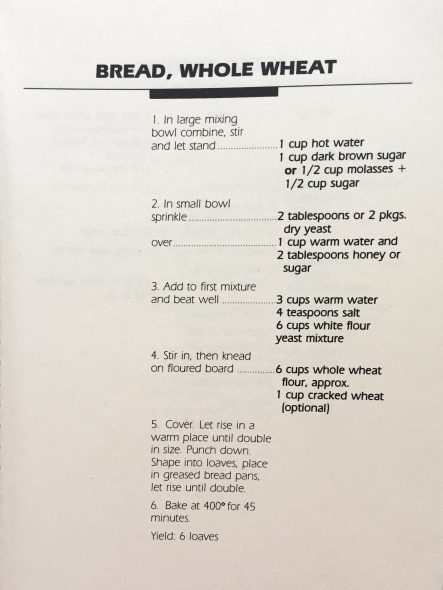
Note that I attempted this recipe before I bought a stand mixer, so all the kneading was done by hand. Luckily, I’ve pretty much committed most of Good Eats to memory, including the episode Dr. Strangeloaf, so I remembered the windowpane method of knowing when the dough is sufficiently developed.
The recipe does yield six loaves — I made one loaf’s worth of dough into rolls, I sliced two loaves and froze them, I froze two more loaves unsliced, we ate most of one loaf, and made the rest of the loaf (which staled amazingly fast) into bread pudding.
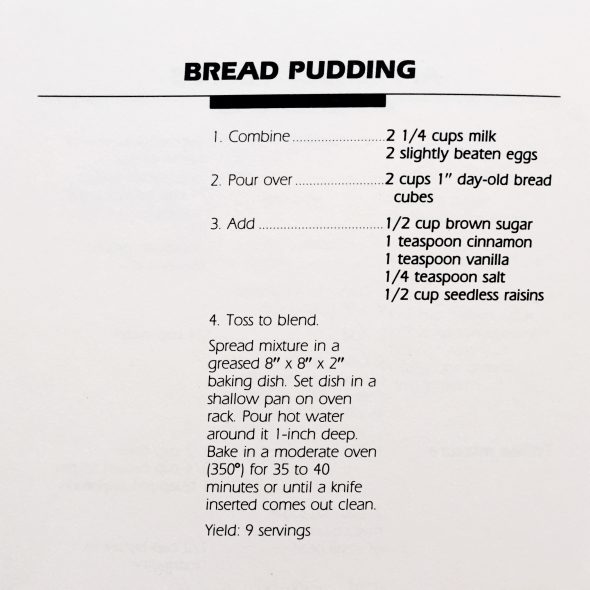
Bread pudding kind of became my favorite dessert after I made this recipe. I could tell this particular version was underspiced, but the texture and level of sweetness was spot-on.
(A couple months later, I tried Alton Brown’s recipe for Spiced Bread Pudding, and that hit the nail squarely on the head, despite my lower-fat and lower-sugar substitutions.)
The day before we went out of town for Spring Break, I made the tuna chowder recipe my Mom had suggested as one of her staples from this cookbook.
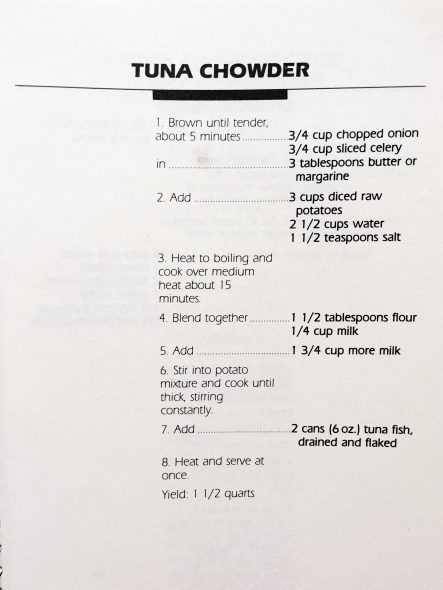
It needed a little extra something in the way of flavor, and adding cheddar cheese didn’t do it for me. I never did figure out what it was missing, although I did learn that chowders don’t freeze well. When we returned from Spring Break, I thawed the frozen leftovers and found them grainy in texture. Live and learn.
Although it was technically April before I busted out my brand new KitchenAid stand mixer for the first time, I decided to make the Sweet Roll recipe in the March Cookbook of the Month, since I hadn’t made many recipes from this bizarre cookbook. I would estimate this as the most successful recipe I tried from Deseret Recipes.
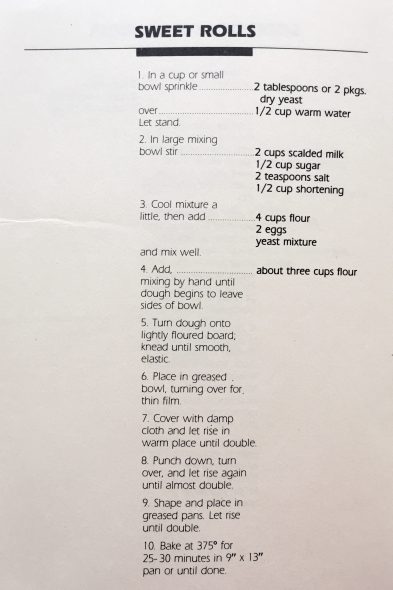
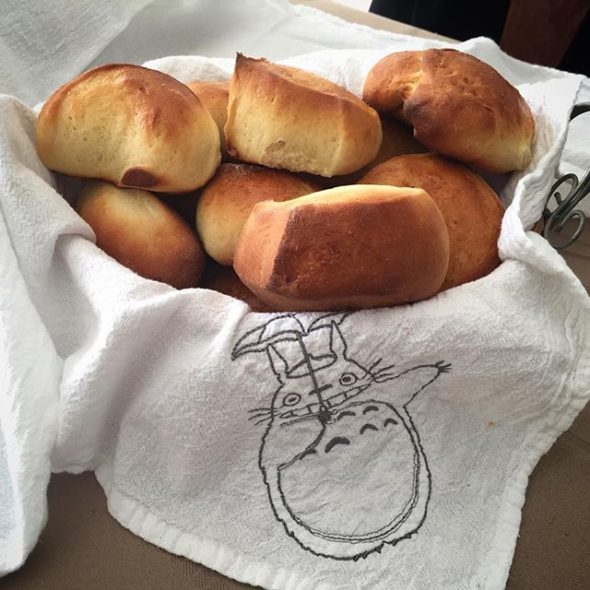
I reserved half of the recipe for cinnamon rolls. They turned out quite good — my husband said they reminded him of the cinnamon rolls that the men’s group at his church used to make when he was a kid — but I would have preferred rolls that were a little softer and lighter.
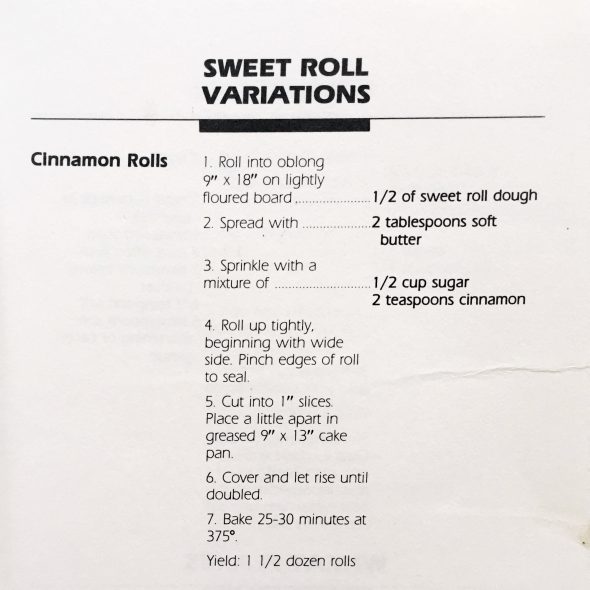
Conclusions? This cookbook is… well, it’s weird. I kind of like the layout of instructions on the left and ingredients on the right, as it’s easy to scan quickly and determine what you need when. The recipes themselves are both basic and unusual — some of them I wondered why you’d need a recipe for that, and others I wondered why you would think to combine those ingredients at all.
This isn’t going to be a go-to cookbook for me as I had hoped, although I’ll probably take another pass through it at some point to see if my opinions of the recipes change over time. Or maybe I’ll intentionally make the weirdest ones I can find.
Plus, there are some decent-looking dessert recipes I’ve yet to try…